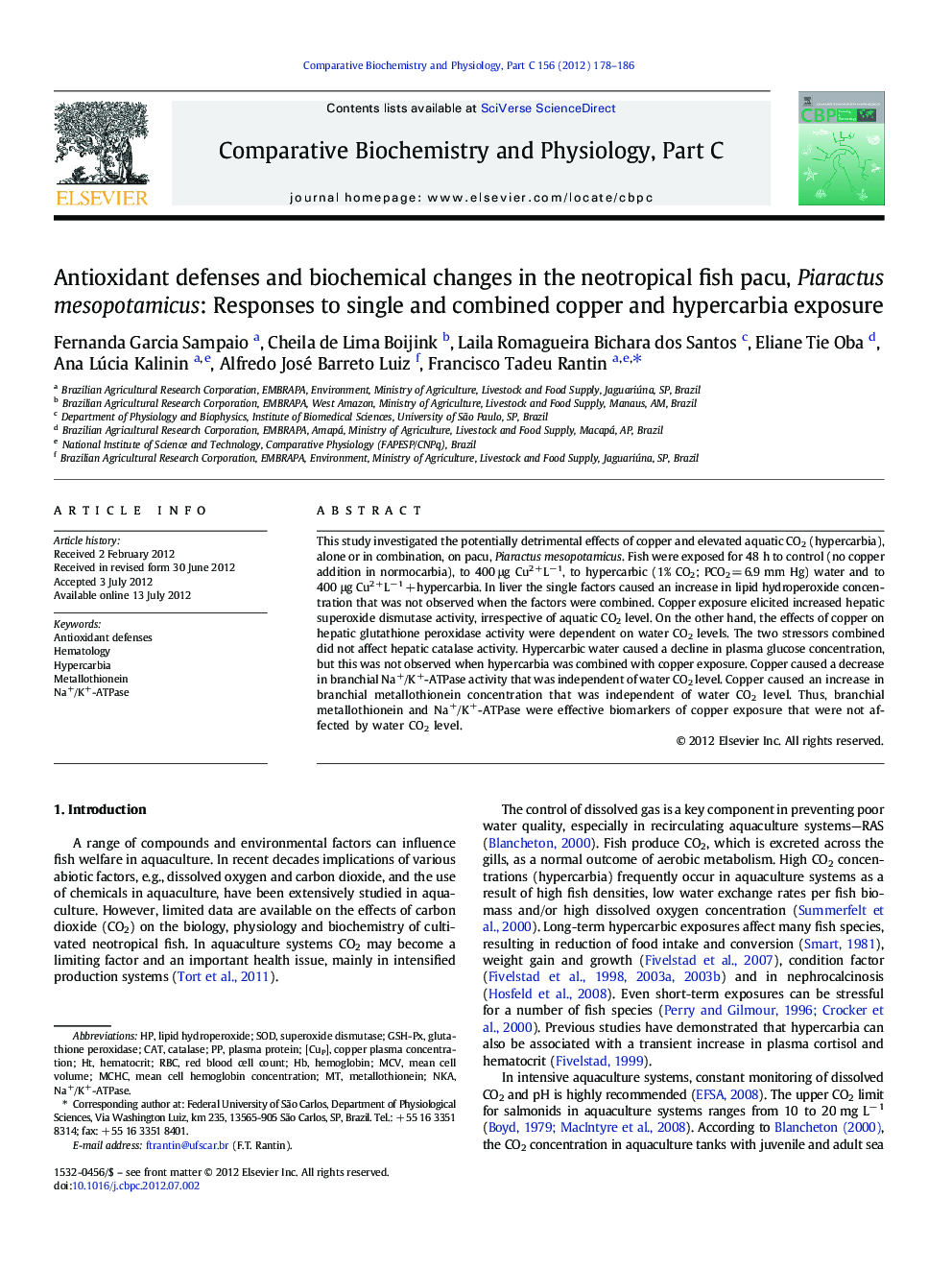| Article ID | Journal | Published Year | Pages | File Type |
|---|---|---|---|---|
| 8319215 | Comparative Biochemistry and Physiology Part C: Toxicology & Pharmacology | 2012 | 9 Pages |
Abstract
This study investigated the potentially detrimental effects of copper and elevated aquatic CO2 (hypercarbia), alone or in combination, on pacu, Piaractus mesopotamicus. Fish were exposed for 48 h to control (no copper addition in normocarbia), to 400 μg Cu2 +Lâ 1, to hypercarbic (1% CO2; PCO2 = 6.9 mm Hg) water and to 400 μg Cu2 +Lâ 1 + hypercarbia. In liver the single factors caused an increase in lipid hydroperoxide concentration that was not observed when the factors were combined. Copper exposure elicited increased hepatic superoxide dismutase activity, irrespective of aquatic CO2 level. On the other hand, the effects of copper on hepatic glutathione peroxidase activity were dependent on water CO2 levels. The two stressors combined did not affect hepatic catalase activity. Hypercarbic water caused a decline in plasma glucose concentration, but this was not observed when hypercarbia was combined with copper exposure. Copper caused a decrease in branchial Na+/K+-ATPase activity that was independent of water CO2 level. Copper caused an increase in branchial metallothionein concentration that was independent of water CO2 level. Thus, branchial metallothionein and Na+/K+-ATPase were effective biomarkers of copper exposure that were not affected by water CO2 level.
Keywords
Related Topics
Life Sciences
Biochemistry, Genetics and Molecular Biology
Biochemistry
Authors
Fernanda Garcia Sampaio, Cheila de Lima Boijink, Laila Romagueira Bichara dos Santos, Eliane Tie Oba, Ana Lúcia Kalinin, Alfredo José Barreto Luiz, Francisco Tadeu Rantin,
